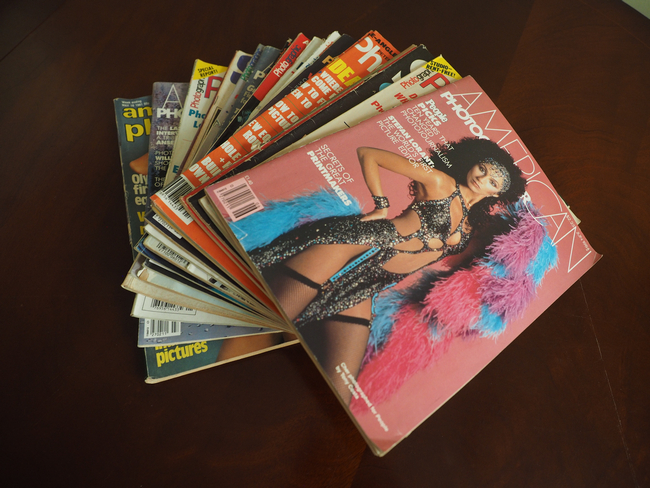Time Capsule
by Christopher Osborne.
It has taken sixteen and a half hours of flying, crossing nine time zones to see my parents. I’ve just woken from a post flight quick two hour nap, and I am presented with a stack of photography magazines dated 1980-4. “What do you want to do with these?” my Father enquires with that parental look that indicates that after forty years, two marriages, two children and another two step children, and heaven knows how many addresses, my justification for having him store my belongings is wearing uncomfortably thin. Actually, what I really want right now is a nice cup of tea.
I shrug, “Simple, we’ll put them into the recycling”, and dutifully take them outside and feed them to a large dark green plastic bin. An hour later, and I am wondering if I haven’t been somewhat premature in my decision making. Shortly afterwards, the magazines are back out of the bin, and over the next two weeks, I read sixteen copies of American Photographer, SLR Camera, Amateur Photographer and Petersen’s Photographic from cover to cover.
As I work my way through the pile, I start to realise what a time capsule I have saved from a landfill. Forty years ago had selected these magazines for storage because of the articles and art in them. But, I am now viewing them in a completely different way.
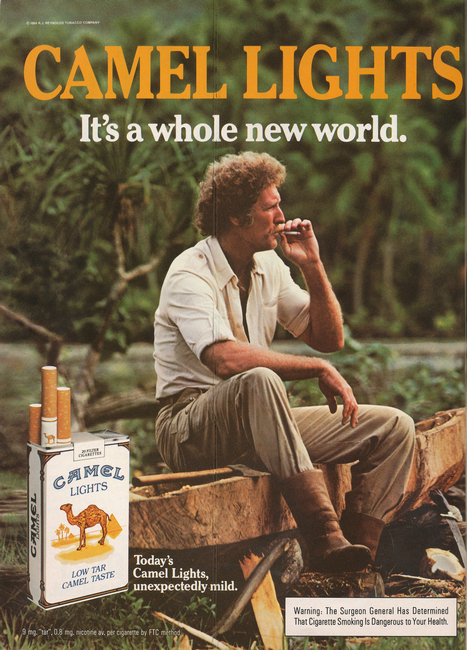
The first thing that really stands out is the tobacco advertising. Real photographers are rugged, with a sense of manliness that borders on scruffy. Men who enjoy the great outdoors, are no stranger to hardship, have unkempt hair, a slightly porn star look, and certainly enjoy as many Camel or Winston’s as they can light up. I’m sure that back in the day assistants don’t just load film and adjust lighting. Popping to the nearest store for more smokes was undoubtedly on the list of duties they were expected to fulfil.
There is a distinct lack of material about women photographers. Unusually, Petersen’s Photographic had an editorial team almost exactly balanced across the sexes, yet out of the fourteen in depth articles, only three are penned by women – and these are exclusively on technical subjects. Eight covers have photographs of gear, seven have images of women, and one has an image of a male boxer. The women include Cher in a minimal dress and fishnet stockings by Tony Costa, and Natassja Kinski wearing nothing but a snake by Richard Avedon. The cover featuring a male model purporting to be a boxer was shot by Michelle Singer. One could be forgiven for thinking that the Eighties was a world where men belonged behind the camera and a woman’s place was unquestionably in front of the lens.
I had forgotten how competitive the analog world used to be. Professionals and amateurs alike need new, better, more feature rich gear. Without it, they will be at best unproductive and probably unable to make stunning images. Heck, it would be surprising if they could make images at all without a new, revolutionary body/lens/winder/flash/enlarger/system – at least in the eyes of the advertisers. I can’t help thinking how many of today’s photographers turn to analog photography because they have found a way of escaping the exactly the kinds of pressures that were skilfully applied by marketing departments to the pages before me.
A new, subtle trend is emerging too. Autofocus lenses, focus peaking, program mode are appearing. With hindsight we can see that this is the first signs of embedded computer programs controlling our photography products.
The artist profiles were as enjoyable as when I first read them. Petersen’s Photographic ran an article of George Hurrell, photographer to the stars in April 1981. American Photographer had a feature on Whitehouse photographer Michael Evans in March 1982 and an article on early American portrait photographer Gertude Käsebier in May 1982. In the March 1984 copy of American Photographer, Sue Allison interviewed Lee Friedlander and in July 1984 they ran a feature on Richard Avedon’s portraits of Marilyn Monroe.
The technical articles seem the most familiar, and in some areas have best stood the test of time. Articles on filters, and how they work, how to make a portable studio, basic one light photography, using your imagination in creating silhouettes, capturing motorcycle action, and pet photography might well be the subjects of contemporary photography magazines. In contrast, articles on achieving colour balance when photographing under fluorescent light, making drying racks for use at home, how to make 35mm positive slides and how to build and use a reflection densitometer seem, well, quirkily analog. And in January 1982, Petersen’s Photographic was advising travellers on “Don’t let airlines zap your film”.
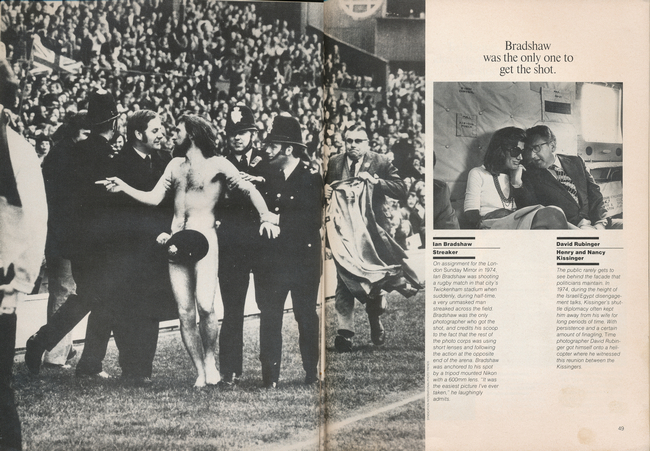
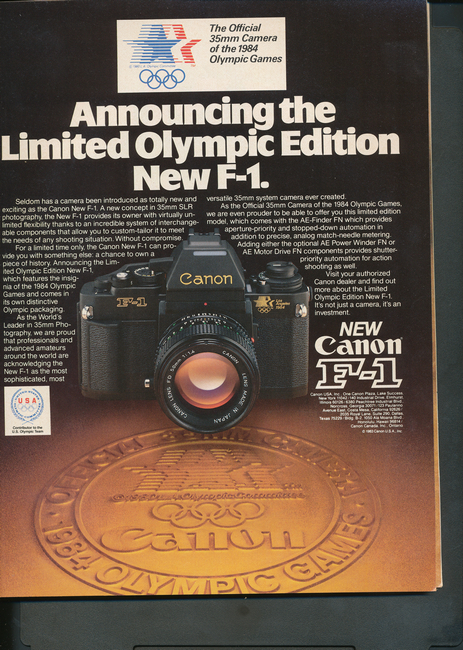
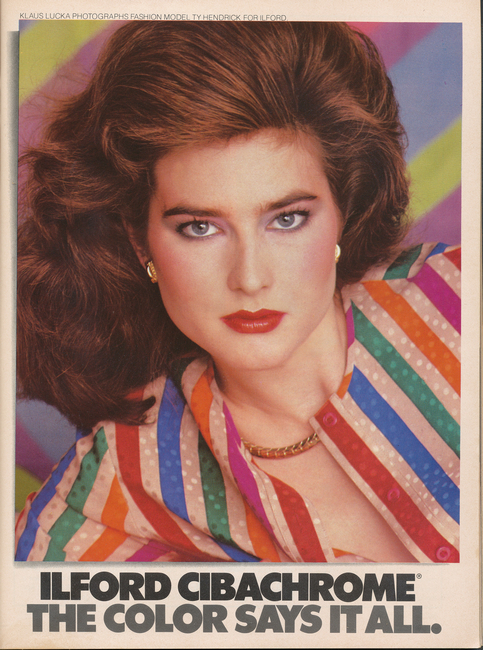
The advertisements are interesting too. Canon are promoting the AE-1 and A1 to the amateur market and the all modular, everything possible is interchangeable F1 to the serious professional. Ilford are marketing the Cibachrome kit (for creating prints directly from transparencies) and its new XP1 film. Kodak advertisements offer ranges of film and photographic paper long forgotten. Polaroid are still introducing new peel apart films like the ER range. Names like Chinon, Cosina, Kiron, Sunpak and Tokina seem like distant memories. And retail stores have a “mail order department” to look after your photographic requirements.
In the December 1981 issue of Petersen’s Photographic, regular columnist Mike Stensvold changes tack to talk about his experiences in creating his column at what he describes were “the controls of my new word processing computer”. It was an Apple 2, and was “a wonderful device”. It was quiet, which was much more considerate to the neighbors at 3 o’clock in the morning than his typewriter! Spelling mistakes and typos could be easily fixed. But it got pretty confusing when, and I quote “I mean, if I hit just one wrong key, my whole story or column, or whatever, could disappear, just like that in the mid
However, there is one article which beyond all others provided a glimpse of the future. In September 1981, Markene Kruse-Smith described a journey across Toyko in a bright red Datsun that took her to Sony’s corporate Headquarters. In a room “as futuristic as a James Bond set” she encountered a high definition TV with no scan lines – the Triniton color monitor which had a quality “approaching that of 35mm film”. She also saw Sony’s High definition Video system which was designed for the image requirements anticipated for the 21st Century. Mr Kuroda, then Sony’s Manager of Press and Public Relations told her that “he expects electronics to dominate the field of imagemaking in the latter part of the 20th Century”.

